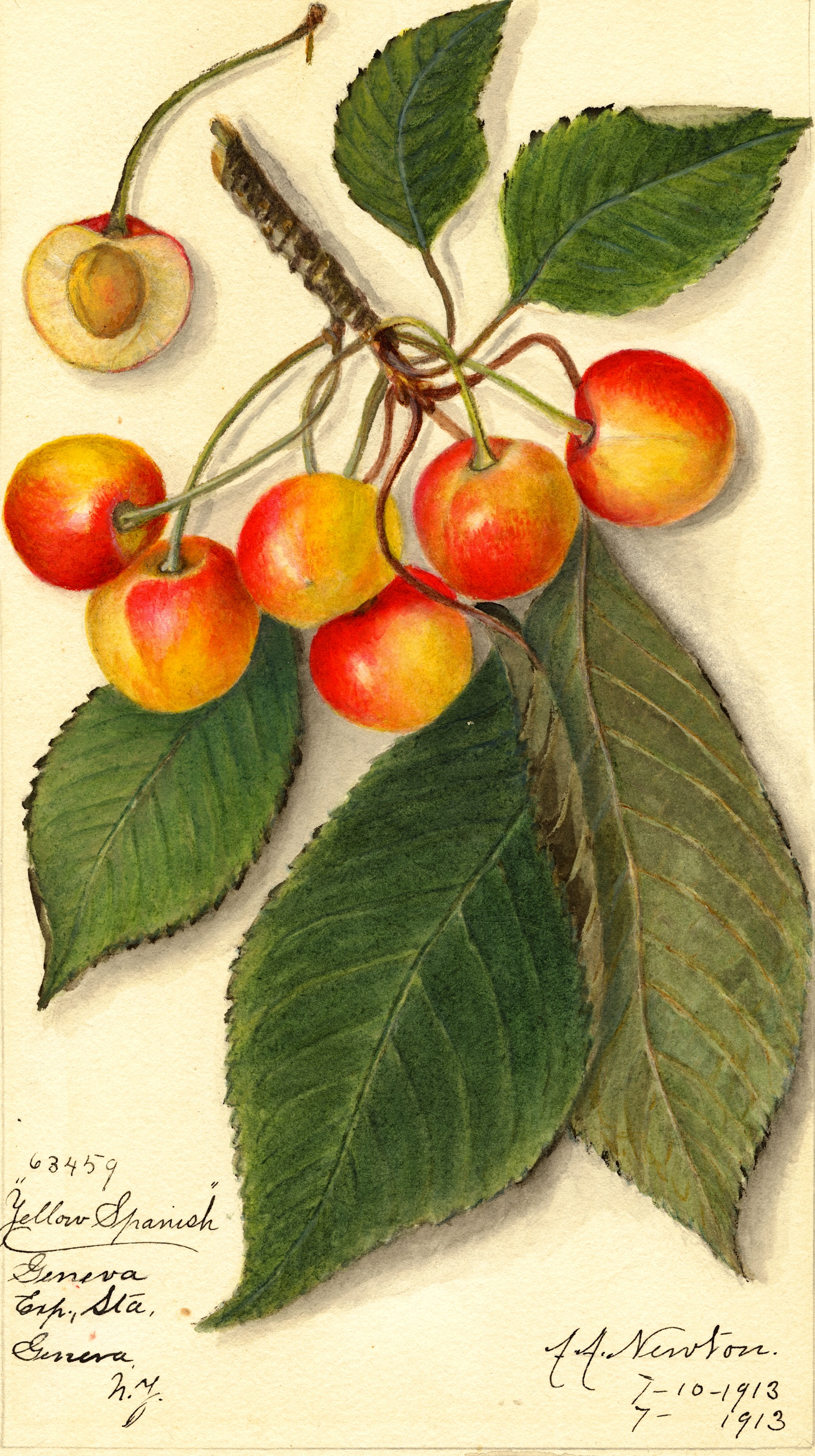 BIGARREAU [YELLOW SPANISH, or GRAFFION]
BIGARREAU [YELLOW SPANISH, or GRAFFION]
This heart shaped large white-yellow cherry with a rosy cheek became a by word for sweetness among light skinned fruits. Visually beautiful, firm fleshed and delicious, this cherry ripened in late June or early July and enjoyed brisk sales at produce markets. Yet its tendency to rot immediately upon ripening made breeders use the variety as breeding stock for improved versions that preserved the taste, size, profusion of fruit, and visual splendor, but did not instantly decay upon picking. Consequently several varieties of Bigarreau cherries appeared at American nurseries—the Napoleon, the Florence, Schmidt’s. Because it combined large size (one inch in diameter was common) and superior taste, the variety has been maintained by the USDA in its stone fruit collection as a breeding resource. http://www.ars-grin.gov/cgi-bin/npgs/acc/display.pl?1001617 . The following characterization of its taste appeared in multiple southern nursery catalogues at the turn of the twentieth century: “fine, rich flavor. This variety, though not of the highest excellence, has become, from its great size, beauty, and productiveness, a great favorite.” [Franklin Davis, Richmond Commercial Nurseries 1869. W. T. Hood Descriptive Catalogue 1907. ] Because the name Bigarreau came to designate the category of fruit bred from the original, the designation “Yellow Spanish” came to be used when referring to the ancestor by nurserymen. The variety dates from the 1600s and was among the first kinds to be established in the Western Hemisphere in Spanish America. In the United States William Prince of Flushing, New York, imported the fruit in 1802 and promoted in assiduously in the following decades. [William Prince, A Short Treatise on Horticulture (New York, 1828), 28].
"Very large, often an inch in diameter; pale yellow, with a handsome, light red cheek to the sun; flesh firm, with a fine, rich flavor. This variety, though not of the highest excellence, has become, from its great size, beauty and productiveness, a general favorite. July." Richmond Commerciary Nursery, Richmond, VA 1897.
Universally offered by nurseries who supplied cherries in the South prior to 1920.
Image: U.S. Department of Agriculture Pomological Watercolor Collection. Rare and Special Collections, National Agricultural Library, Beltsville, MD 20705, Amanda Newton, 1913.
David S Shields